
Tips on concert photography
As a companion piece to the recent guest article by Mark Tepsic – Camera Settings for Concert Photography – here are my thoughts and advice on camera techniques photographing music concerts. It’s not something I often photograph – I mostly just want to enjoy the experience of the concert without having to be concerned with taking photos – aside from a shot or two to post on Instagram. But this was an opportunity I could relish – photographing a favorite band who has influenced countless other musicians and bands over the course of the past four decades – Gang Of Four. How did I get to photograph them in concert? I asked.
Here then are some observations about photographing a band in concert. Much of it is just good technique, and you’ll notice that there’s a lot of intersection with the article that Mark Tepsic wrote, simply because of the subject matter – low light, with wildly changing lighting, with musicians who move around the stage. This means the advice from photographers will converge to similar good advice.
I brought along the camera best suited to low light, and focusing in low light – the Nikon D5 (affiliate). I didn’t want to change lenses – so it was just the Nikon 24-70mm f/2.8E VR lens (affiliate). The lens’ stabilization wouldn’t be of much use – the band members are actively moving around – this would be no static performance.
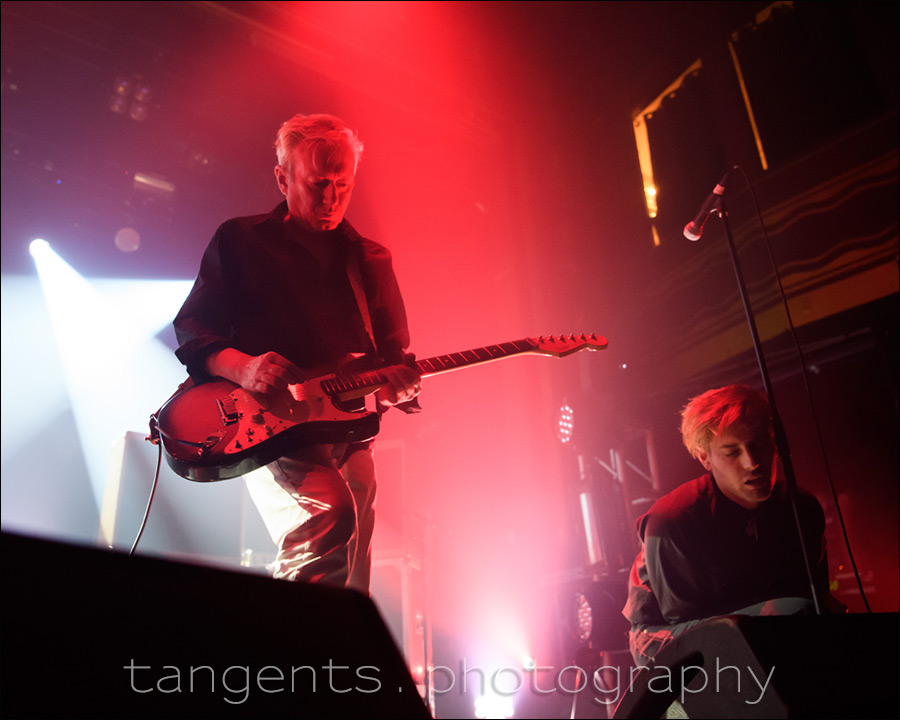
- 1/125 @ 3.2 @ 6400 ISO
- Nikon D5 || Nikon 24-70mm f/2.8E VR
Composition and timing: with concert photography, everything still hinges on the essential elements of photography – composition and timing. The moment, carefully balanced within the frame. While shooting, those are the two most important things that I concentrate on. Not the camera settings so much.
Successful photographs will show a dynamic balance in the composition – but there has to be a peak moment of some kind. There has to be more than just perfectly balanced elements within the frame. So while busy with the photographing of the event, I’m constantly waiting for things to come together within the frame – the musicians and the lighting. Forms and shapes.
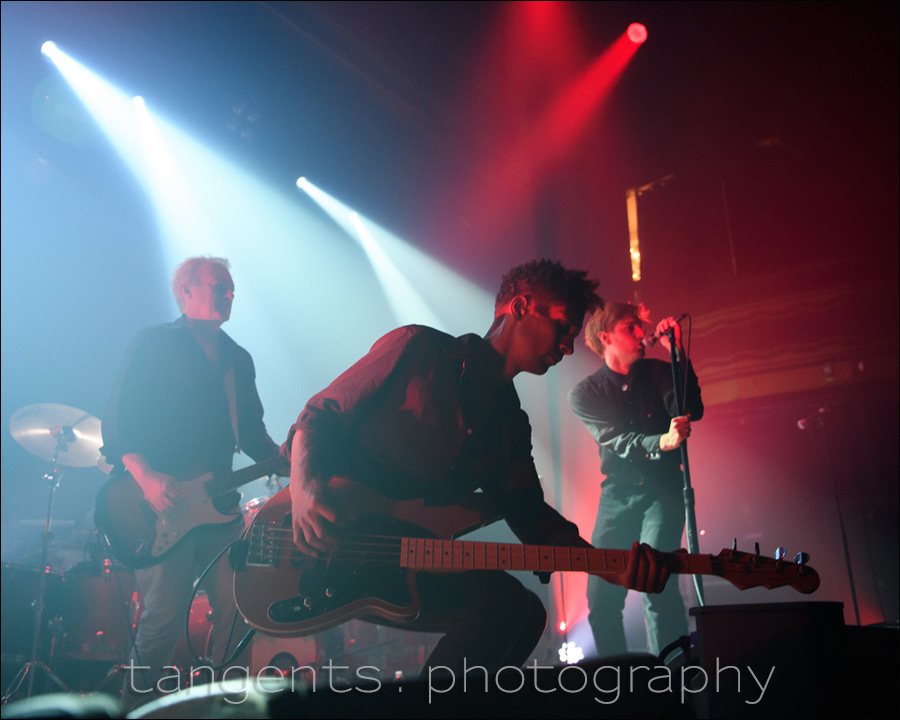
- 1/320 @ 3.2 @ 6400 ISO
- Nikon D5 || Nikon 24-70mm f/2.8E VR
Even though I shoot many frames, in the short time allotted – 3 songs while in front of the barrier – I’m attempting to get images where some elements are balanced in the frame, whether the band members and lighting. Forms and shapes. Instinctively trip the shutter when you feel it has all come together within the frame. But things move so quickly, and the lighting especially changes so fast, that you have to shoot multiple frames, or even bursts of frames.
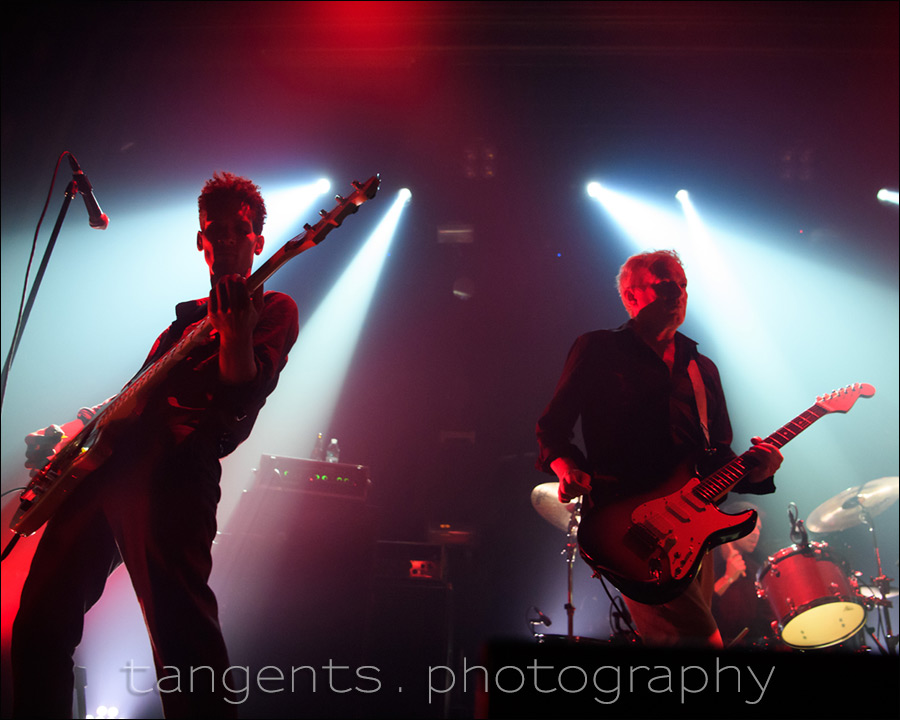
- 1/320 @ 3.2 @ 6400 ISO
- Nikon D5 || Nikon 24-70mm f/2.8E VR
This is the key – balancing elements with purpose within the frame. For me, the core tenet of photographic composition – frame, don’t aim. Make sure you don’t just point your camera at your subjects on the stage, centering them in the frame. Ideally there has to be a dynamic composition holding the image together.
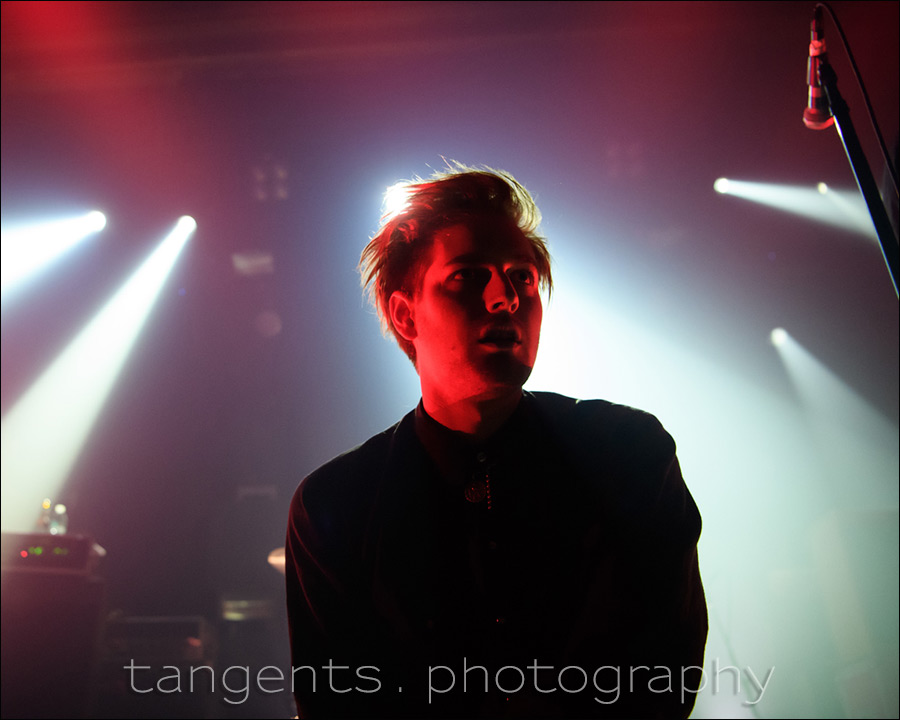
- 1/320 @ 3.2 @ 6400 ISO
- Nikon D5 || Nikon 24-70mm f/2.8E VR
Timing – getting meaningful images which are representative of the experience, showing movement and gesture. You have to imply the experience of being there through a photo …. sans the music. It’s a challenge.
There are moments which might not have a clear context within the performance, but are dramatic enough, and definitely captures the mood.

- 1/125 @ f/3.2 @ 6400 ISO
- Nikon D5 || Nikon 24-70mm f/2.8E VR
Exposure metering – this is more of a feel thing, than possibly any other areas of photography. The lighting changes so much, and often goes to a near-monochromatic look with just one color dominating. There’s no real way to meter for that accurately and quickly. So instead of metering, I guesstimate the exposure at various points, and adjust the shutter speed and aperture as I need to, to get good exposure. Note, the word ‘good’ exposure. I didn’t mention ‘correct’ exposure since you wouldn’t necessarily go for correct skin tones and placement of tonal values.
You really are after capturing the mood and the moment here. This includes faces in near dark, or with the band members silhouetted – with that, the more traditional way of exposure metering falls by the wayside. Go for the mood and the moment.
With lighting sometimes become just the single tonality of just one color, you will get a kind of posterization – it plays havoc with image sharpness. Again though, concert photography is more about capturing the excitement and mood of the performance!

- 1/250 @ f/3.5 @ 6400 ISO
- Nikon D5 || Nikon 24-70mm f/2.8E VR
Starting with exposure settings which give me the look I want, I might change the shutter speed, or aperture (and sometimes ISO), as the set’s lighting changes. Each song will quite likely have a different lighting setup. So I don’t frantically change camera settings in the vain hope of chasing correct exposure. If the lights are flashing, I fire bursts of sequences – some will be darker, some will be blown out … and some will be great. It sounds like a shotgun approach, and in a sense it is, but it does get the results. It’s a calculated method to get some keeper images in a situation where the lighting is unpredictable.
I do a quick chimp every so often to confirm exposure – just a glance at the back of my camera, knowing that I am in the ballpark, and that I can still control things afterwards with the latitude that RAW files give me. Oh, and I shoot in Auto WB during concerts – there really isn’t something like correct WB, unless the performer is under a consistent light source such as Incandescent lighting.
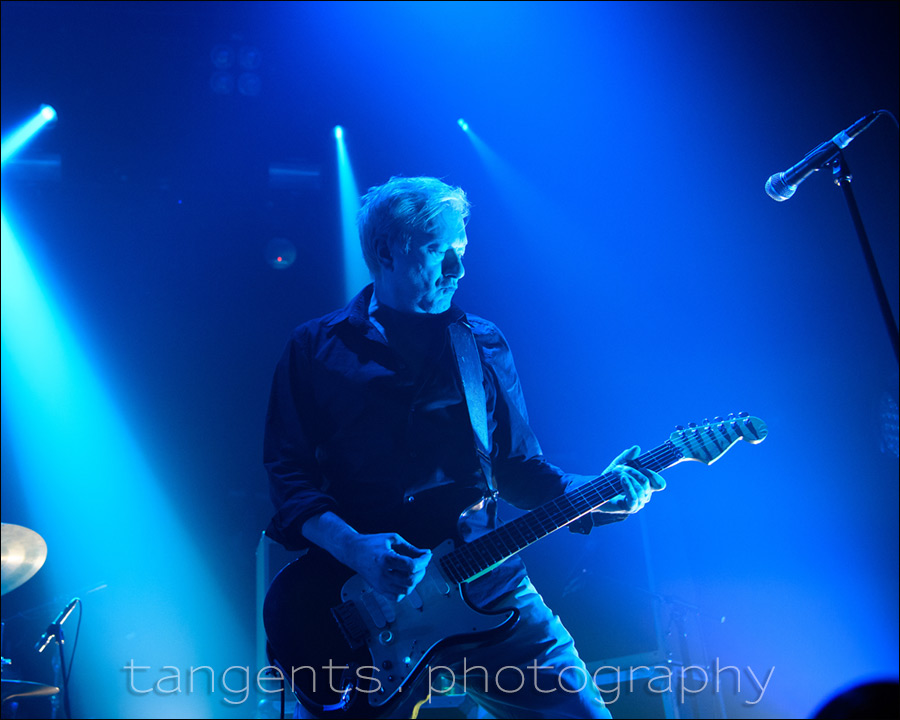
- 1/125 @ 3.2 @ 6400 ISO
- Nikon D5 || Nikon 24-70mm f/2.8E VR
More about the music itself: The mainstay of the Gang Of Four is Andy Gill, the songwriter and guitarist. For me, he is one of the guitar gods. When friends mention Hendrix or Clapton or Van Halen, I refer them to the angular sounds of Andy Gill’s guitar – cold hard shards of sound, interleaved with harmonic tones and brittle rhythms – a wide range of sounds from his guitar that matches anything by the other great guitarists.
I live my life to a music soundtrack – there is usually music to fill the spaces during my day. There have been a few key music artists which have had an enduring impact that helped shaped what I listen to, and therefore indirectly, my life. One of these bands, is Gang Of Four. From the first moment somewhere in the early 80s when I heard the song Paralysed, the opening track on their second album, I was riveted. Much of the music landscape then for me was British punk and post-punk (and New Wave). Instead of the Punk noise which most bands embraced, here was an even harder sound, but controlled. The rhythm section, then as well as now, sound like an unstoppable juggernaut with the aggressive attack that you’d expect from a post-punk band.

- 1/125 @ 3.2 @ 6400 ISO
- Nikon D5 || Nikon 24-70mm f/2.8E VR
As mentioned, with a press pass you are usually allowed three songs before having to leave the area in the front. So the angles tend to be from lower down. This does make for dynamic compositions, but to add variety, I also took some photos later on from the crowd, about 5 or 6 people deep into the audience. This was a smaller venue – Webster Hall in NYC, not a large auditorium or stadium, so the 24-70mm still sufficed from where I was in the audience.
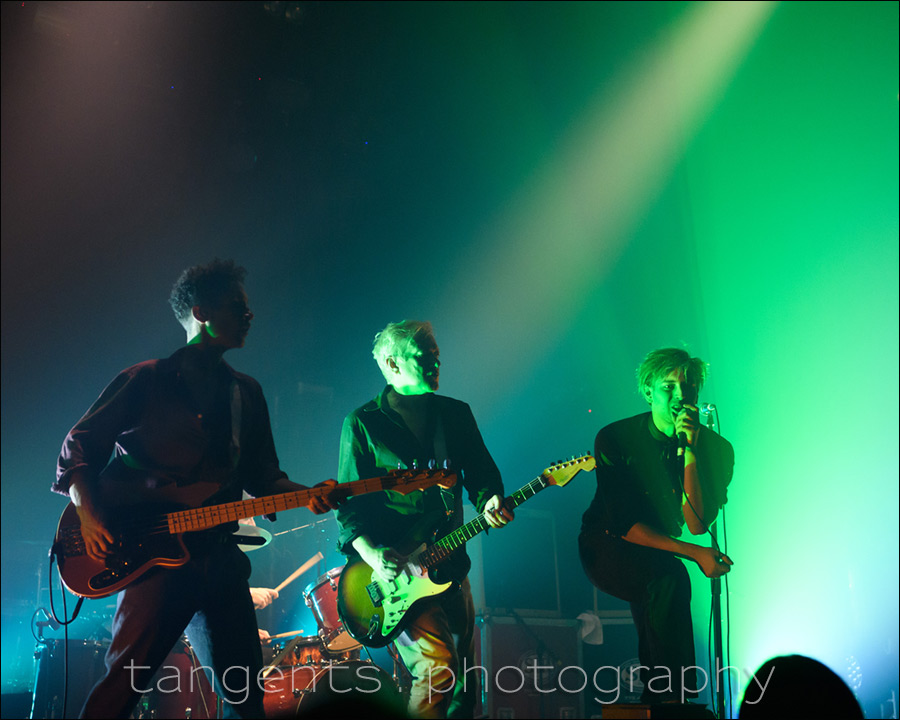
- 1/125 @ 3.2 @ 6400 ISO
- Nikon D5 || Nikon 24-70mm f/2.8E VR
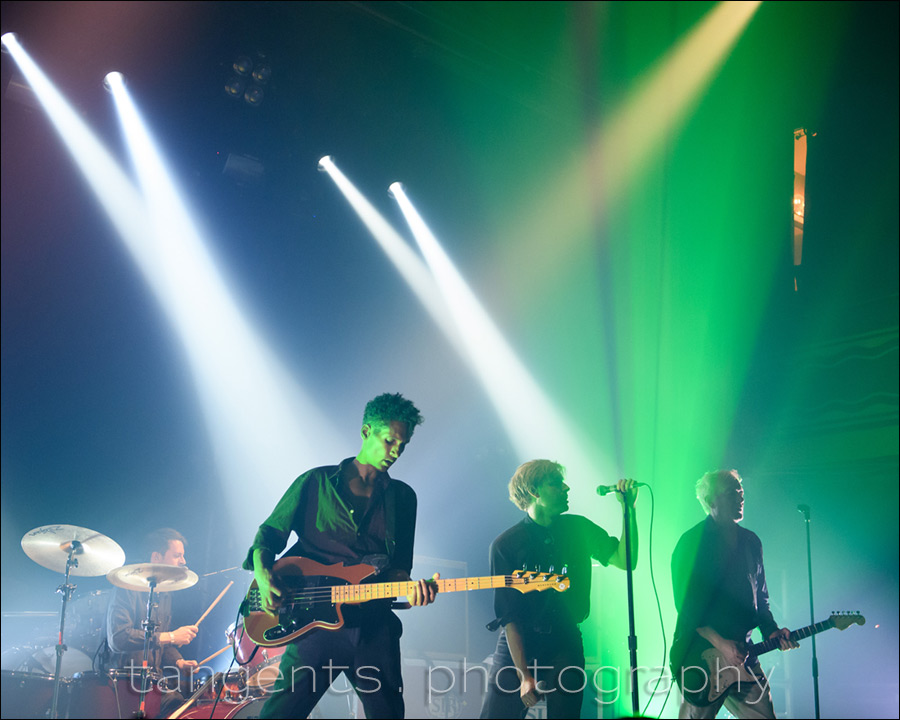
- 1/125 @ 3.2 @ 6400 ISO
- Nikon D5 || Nikon 24-70mm f/2.8E VR
I find the zoom, even with the slower aperture than a fast prime, is still more versatile and faster to use than a prime lens. I’m constantly changing my composition and how tightly I frame – what I include and exclude. Zoom wider / tighter. Change it up. Re-frame constantly.
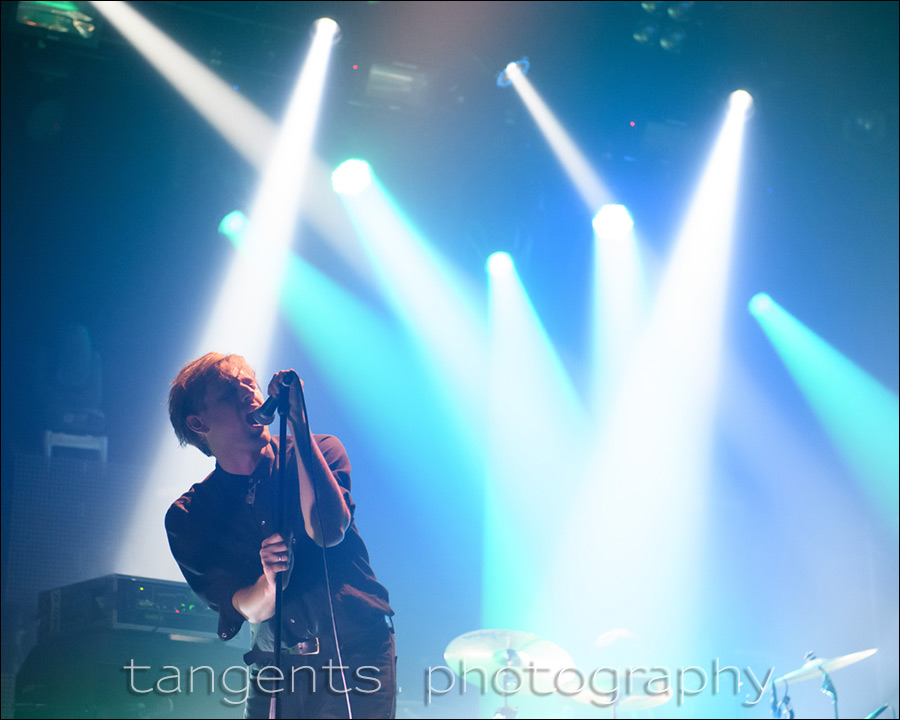
- 1/125 @ 3.2 @ 6400 ISO
- Nikon D5 || Nikon 24-70mm f/2.8E VR
I use Single focus mode. Continuous / Serve AF is too unpredictable in how it will follow focus when the background is so often brighter than your subject, especially with off-center compositions.
With the Nikon D5, I used Single AF, with the Grouped points. I moved the AF group around in the frame to give me proper AF within the composition I wanted. It needs dexterity and familiarity with your camera – a good thing with any field of photography. Know your camera by touch!
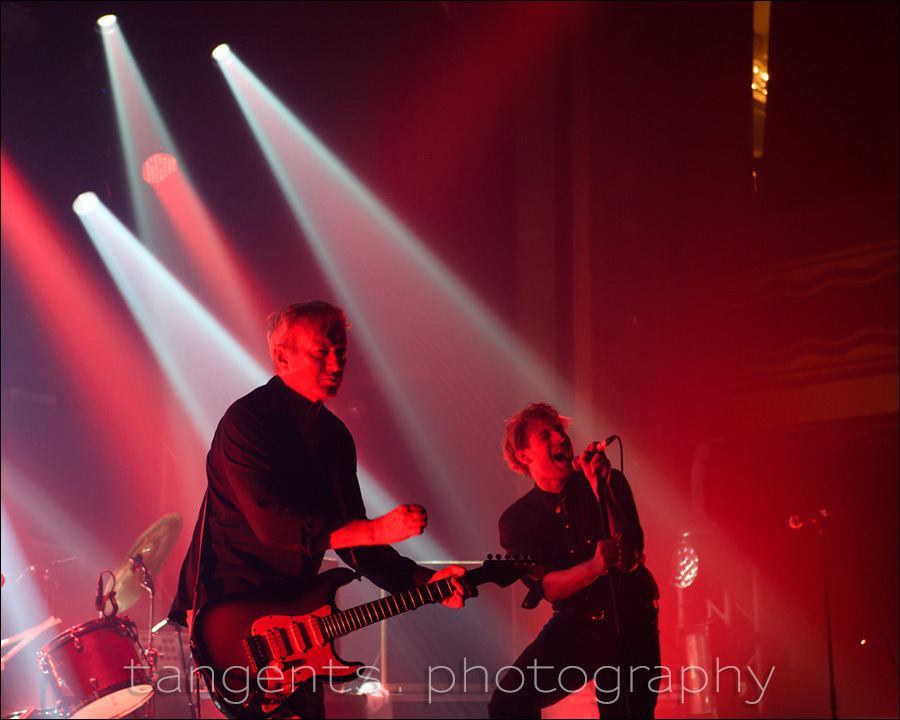
- 1/125 @ 3.2 @ 6400 ISO
- Nikon D5 / Nikon 24-70mm f/2.8E VR
Related links
- Camera Settings for Concert Photography, a guest post by Mark Tepsic
- Gang Of Four Website | Facebook | Instagram
I’m not so sure that VR doesn’t help. After all if you get all the static objects sharp but there is some movement in the band it does perhaps give a sense of the occasion. :)
Dear Neil,
I have liked all of your work that I have seen, your posts on your blog have been of great help to me, and you listen to Gang of Four? That has shot you from the top of the charts through the roof, in my estimation. Many thanks.
Rupak Roy, India.
I think these would look good in b&w. Personally I don’t like all the coloured lighting and prefer a gritty b&w image.
P.S.
What happened to the days when bands were happy to let you stand there all evening?
David Gerrard